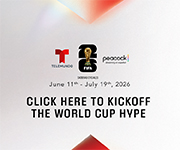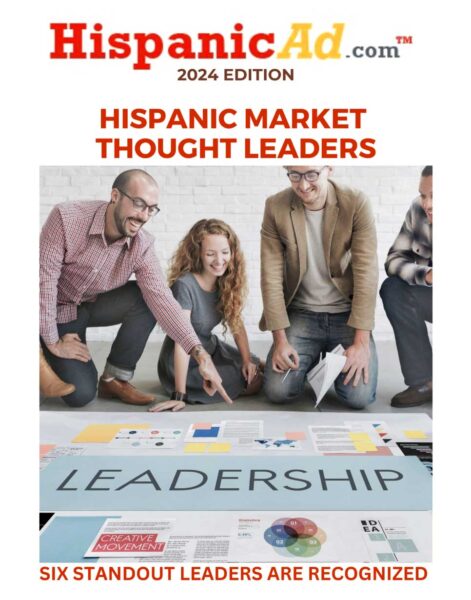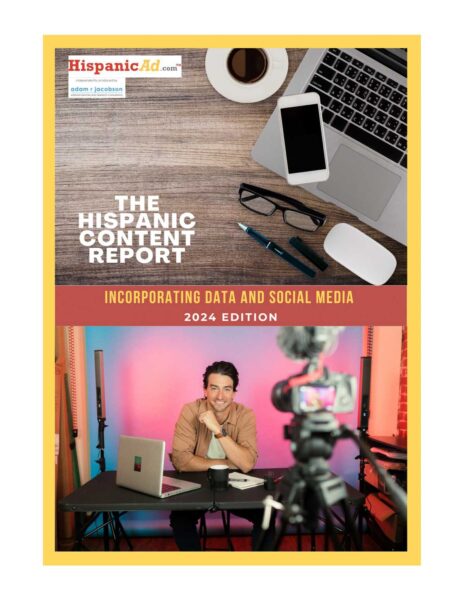 The United States has spent the past century expanding its economic power, and it shows in American families’ wealth. Despite income stagnation outside the circle of high earners, median family wealth grew from $83,000 in 1992 to $97,000 in 2016 (in 2016 dollars).
The United States has spent the past century expanding its economic power, and it shows in American families’ wealth. Despite income stagnation outside the circle of high earners, median family wealth grew from $83,000 in 1992 to $97,000 in 2016 (in 2016 dollars).
Agency
The economic impact of closing the racial wealth gap [REPORT]
When planning backfires. Remembering Robert Moses.
 By Gonzalo López Martí – Creative director, etc / LMMiami.com
By Gonzalo López Martí – Creative director, etc / LMMiami.com
- Marketing and its little sister advertising seem to make this mistake quite often: in trying to combat, say, tobacco or drugs, they unwittingly promote the use thereof.
- Simply by bringing their existence to the forefront.
- Sometimes, the best solution to a problem is ignoring it.
- The Robert Moses paradox.
Streaming: Friend or Foe to Local Markets? [REPORT]
 Given today’s digitally charged, on-demand media environment, it’s easy to get caught up in the excitement around the growing array of video streaming options, especially amid the proliferation of internet-connected devices and smart TVs. And there’s good reason for the buzz: 56% of U.S. adults stream non-linear content to their TVs. That fact notwithstanding, our actual TV streaming habits have yet to truly live up to the buzz.
Given today’s digitally charged, on-demand media environment, it’s easy to get caught up in the excitement around the growing array of video streaming options, especially amid the proliferation of internet-connected devices and smart TVs. And there’s good reason for the buzz: 56% of U.S. adults stream non-linear content to their TVs. That fact notwithstanding, our actual TV streaming habits have yet to truly live up to the buzz.
Implications of Economic Deceleration for Advertisers
 Fragile global economy shows mild fractures. Concerns have risen around the health of the global economy since we published the mid-year update to our global advertising forecasts at the beginning of June.
Fragile global economy shows mild fractures. Concerns have risen around the health of the global economy since we published the mid-year update to our global advertising forecasts at the beginning of June.
Are CEOs responsible for the decline of brand-building campaigns?
 My colleague Daren Poole pointed me to a study by the Financial Times (FT) and the Institute of Practitioners in Advertising (IPA) designed to understand why the balance of marketing spend has shifted from brand-building to performance campaigns. It suggests that poor knowledge of how brands create value over the short and long-term may be at fault. by Nigel Hollis
My colleague Daren Poole pointed me to a study by the Financial Times (FT) and the Institute of Practitioners in Advertising (IPA) designed to understand why the balance of marketing spend has shifted from brand-building to performance campaigns. It suggests that poor knowledge of how brands create value over the short and long-term may be at fault. by Nigel Hollis
What’s a Nano Influencer?
 Marketers can reap big payoffs by tapping social media influencers, of course. But using them isn’t cheap. Brands can expect to pay influencers $1,000 per 100,000 followers on Instagram and upwards of $200,000 for a celebrity who has more than 100 million followers. Plus, the field is noisy and cluttered: Social media platforms like Instagram are teeming with both bigger and lesser-known celebrities paid by brands to promote products. That’s why an increasing number of marketers are turning to nano influencers, or nanos for short.
Marketers can reap big payoffs by tapping social media influencers, of course. But using them isn’t cheap. Brands can expect to pay influencers $1,000 per 100,000 followers on Instagram and upwards of $200,000 for a celebrity who has more than 100 million followers. Plus, the field is noisy and cluttered: Social media platforms like Instagram are teeming with both bigger and lesser-known celebrities paid by brands to promote products. That’s why an increasing number of marketers are turning to nano influencers, or nanos for short.
Getting Back to Basics
 The foundational strategic thinking behind media planning is simple: What percentage of a target audience does a brand need to reach and how many times does it need to reach that percentage in order to accomplish its business objectives? Unfortunately, this basic thinking has been lost in the dense fog of programmatic innovation, hidden behind the very tools designed to bring this thinking to life.
The foundational strategic thinking behind media planning is simple: What percentage of a target audience does a brand need to reach and how many times does it need to reach that percentage in order to accomplish its business objectives? Unfortunately, this basic thinking has been lost in the dense fog of programmatic innovation, hidden behind the very tools designed to bring this thinking to life.
Earn your ethics in advertising certificate – register now!
 Earn your ethics in advertising certificate – register now! On Oct. 10, the AAF will present a FREE 90-minute webinar that will provide insight into the importance of creating ethical advertising in a competitive business environment. From consumer privacy rights and creating cultural value systems to affirmative disclosures and the regulations behind truth and transparency, this course covers a variety of information geared to educate participants on how to best conduct business justly. #FreeAdEthicsDay webinar will be presented at three different times: 12:30 p.m. ET, 3 p.m. ET and 6:30 p.m. ET.
Earn your ethics in advertising certificate – register now! On Oct. 10, the AAF will present a FREE 90-minute webinar that will provide insight into the importance of creating ethical advertising in a competitive business environment. From consumer privacy rights and creating cultural value systems to affirmative disclosures and the regulations behind truth and transparency, this course covers a variety of information geared to educate participants on how to best conduct business justly. #FreeAdEthicsDay webinar will be presented at three different times: 12:30 p.m. ET, 3 p.m. ET and 6:30 p.m. ET.
Power of One: Athletes as Endorsers [REPORT]
 In an era of media overload and ad-blocking, brands are increasingly enlisting celebrities to do their messaging legwork for them via social media. And they’re not just asking celebs to be spokespeople. They’re looking for ambassadors that can reach audiences in ways that are authentic to their own personal brands, rather than those that are affiliated with the products and services they’re paid to represent.
In an era of media overload and ad-blocking, brands are increasingly enlisting celebrities to do their messaging legwork for them via social media. And they’re not just asking celebs to be spokespeople. They’re looking for ambassadors that can reach audiences in ways that are authentic to their own personal brands, rather than those that are affiliated with the products and services they’re paid to represent.
The Diversity Effect [REPORT]
 In partnership with Univision, CivicScience conducted a study looking at the importance of diversity and inclusion among the U.S. Hispanic adult population, compared to non-Hispanic adults both within the workplace and in advertisements. There are huge learnings brands and advertisers should know.
In partnership with Univision, CivicScience conducted a study looking at the importance of diversity and inclusion among the U.S. Hispanic adult population, compared to non-Hispanic adults both within the workplace and in advertisements. There are huge learnings brands and advertisers should know.
Hogg Foundation to Award $2 Million in Grants for 2020 Census, Latinos a Key Focus
 The Hogg Foundation for Mental Health is accepting proposals for the Texas Communities Count initiative, which will support complete count efforts in Texas for the 2020 U.S. Census. The foundation plans to award grants totaling $2 million.
The Hogg Foundation for Mental Health is accepting proposals for the Texas Communities Count initiative, which will support complete count efforts in Texas for the 2020 U.S. Census. The foundation plans to award grants totaling $2 million.
PM3 going GREEN?
 Every year, more and more companies are going green. Rightfully so, it’s become imperative to make environmentally conscious decisions on a corporate and personal level. However, the multicultural ad agency, PM3, is taking on a different type of green initiative. Is this Georgia based agency tapping into the canna-craze?
Every year, more and more companies are going green. Rightfully so, it’s become imperative to make environmentally conscious decisions on a corporate and personal level. However, the multicultural ad agency, PM3, is taking on a different type of green initiative. Is this Georgia based agency tapping into the canna-craze?
Can you buy AI technology to make your life better?
 Fact or fiction? breaks down common myths and misconceptions about digital transformation, while showcasing KPMG leaders’ perspectives on related topics such as artificial intelligence and blockchain, and the impact of these emerging technologies on the workforce, businesses and society.
Fact or fiction? breaks down common myths and misconceptions about digital transformation, while showcasing KPMG leaders’ perspectives on related topics such as artificial intelligence and blockchain, and the impact of these emerging technologies on the workforce, businesses and society.
Unique problems need unique solutions.
 It’s not just about the tech. Because technology implemented without a crystal-clear business focus can’t yield its true value. Our people—behind the tech—help transform organizations. We’re powered by collaboration—among ourselves, with clients, and with the world’s most-progressive digital companies. We play the long game, investing in our clients and our people.
It’s not just about the tech. Because technology implemented without a crystal-clear business focus can’t yield its true value. Our people—behind the tech—help transform organizations. We’re powered by collaboration—among ourselves, with clients, and with the world’s most-progressive digital companies. We play the long game, investing in our clients and our people.
Is sustainability simply too important to be a selling point?
 I bought my favourite moisturiser last week out of habit, only to discover that Simple had made a packaging change. Not one that impacts how I used the product or makes the pack more beautiful, but one that makes me love the brand a little more. Simply discovering that your brand has done the right thing can be more powerful than being told it has. by Sarah Mitson – COO, Insights Offer – Kantar
I bought my favourite moisturiser last week out of habit, only to discover that Simple had made a packaging change. Not one that impacts how I used the product or makes the pack more beautiful, but one that makes me love the brand a little more. Simply discovering that your brand has done the right thing can be more powerful than being told it has. by Sarah Mitson – COO, Insights Offer – Kantar
The Evolution of the Internet, Identity, Privacy and Tracking – How Cookies and Tracking Exploded, and Why We Need New Standards for Consumer Privacy
 It’s time we speak frankly about a very personal matter: your privacy on the internet. By Jordan Mitchell – Senior Vice President, Membership and Operations / IAB Tech Lab
It’s time we speak frankly about a very personal matter: your privacy on the internet. By Jordan Mitchell – Senior Vice President, Membership and Operations / IAB Tech Lab
Internet of Things Infographic, 2019 Edition
 Get smart on the ways the Internet of Things is affecting the industry today, and explore ways the technology may influence marketing in the future.
Get smart on the ways the Internet of Things is affecting the industry today, and explore ways the technology may influence marketing in the future.
The Multicultural Myopia
 According to the official U.S. Census Bureau’s projections, next year, 2020, will be the year when the majority of our country’s population of 17-years-olds and under will come from a minority background, most of them from a Latino, African-American or Asian-American ethnicity. By Isaac Mizrahi – Co-President of ALMA
According to the official U.S. Census Bureau’s projections, next year, 2020, will be the year when the majority of our country’s population of 17-years-olds and under will come from a minority background, most of them from a Latino, African-American or Asian-American ethnicity. By Isaac Mizrahi – Co-President of ALMA
Which Half of my Advertising is Wasted — and It Is Only Half?
 “Half my advertising spend is wasted; the trouble is, I don’t know which half.” This quote is regularly attributed to either U.S. retail magnate John Wanamaker or to UK industrialist Lord Leverhulme, depending on which side of the Atlantic you were trained. The quote has become a cliché for the uncertainty about the effectiveness (or ineffectiveness) of advertising.
“Half my advertising spend is wasted; the trouble is, I don’t know which half.” This quote is regularly attributed to either U.S. retail magnate John Wanamaker or to UK industrialist Lord Leverhulme, depending on which side of the Atlantic you were trained. The quote has become a cliché for the uncertainty about the effectiveness (or ineffectiveness) of advertising.
It’s Time to Take the Blinders Off
 Among the many facets of change, perhaps none is more daunting than the need to not fall behind or get caught off guard. So what are the big “watch-outs” that consumer packaged goods (CPG) manufacturers and retailers need to be mindful of among the many that might not carry as much weight over the long term? While we could list many, we’ve identified three blind spots that we believe should be top of mind given the long-term nature of the implications involved.
Among the many facets of change, perhaps none is more daunting than the need to not fall behind or get caught off guard. So what are the big “watch-outs” that consumer packaged goods (CPG) manufacturers and retailers need to be mindful of among the many that might not carry as much weight over the long term? While we could list many, we’ve identified three blind spots that we believe should be top of mind given the long-term nature of the implications involved.






























